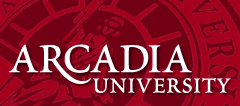Loading...
Date of Award
Spring 2025
Degree Name
Master of Medical Science (Physician Assistant)
Department
Physician Assistant; College of Health Sciences
First Advisor
Kevin Basile
Abstract
Idiopathic clubfoot is one of the most common musculoskeletal deformities worldwide, affecting about one in 1,000 live births. Clubfoot has four characteristic deformities: equinus, heel varus, midfoot adductus, and cavus. Without proper and timely treatment, patients may develop progressive, painful, disabling, and permanent lower extremity deformities, hindering them from meeting developmental milestones, walking and staying active, performing tasks of employment, and living a satisfactory, pain-free quality of life. The gold-standard treatment is the Ponseti Method, which involves several weeks of in-office appointments for gentle manipulation and serial plaster casting, a percutaneous achilles tenotomy, and a prolonged multi-year long bracing phase. Even with treatment, the deformity can recur for numerous reasons. An opportunity for improving patient care and quality of life arises in identifying psychological, social, and economic barriers to care for these patients and implementing programs to help alleviate them. This article aims to elucidate some of these potential barriers and provide evidence-based recommendations for healthcare providers to mitigate them.
Recommended Citation
Burkett, Natalie, "Considerations for Improving Accessibility to the Ponseti Method for Idiopathic Clubfoot Treatment" (2025). Capstone Showcase. 94.
https://scholarworks.arcadia.edu/showcase/2025/pa/94
Considerations for Improving Accessibility to the Ponseti Method for Idiopathic Clubfoot Treatment
Idiopathic clubfoot is one of the most common musculoskeletal deformities worldwide, affecting about one in 1,000 live births. Clubfoot has four characteristic deformities: equinus, heel varus, midfoot adductus, and cavus. Without proper and timely treatment, patients may develop progressive, painful, disabling, and permanent lower extremity deformities, hindering them from meeting developmental milestones, walking and staying active, performing tasks of employment, and living a satisfactory, pain-free quality of life. The gold-standard treatment is the Ponseti Method, which involves several weeks of in-office appointments for gentle manipulation and serial plaster casting, a percutaneous achilles tenotomy, and a prolonged multi-year long bracing phase. Even with treatment, the deformity can recur for numerous reasons. An opportunity for improving patient care and quality of life arises in identifying psychological, social, and economic barriers to care for these patients and implementing programs to help alleviate them. This article aims to elucidate some of these potential barriers and provide evidence-based recommendations for healthcare providers to mitigate them.
